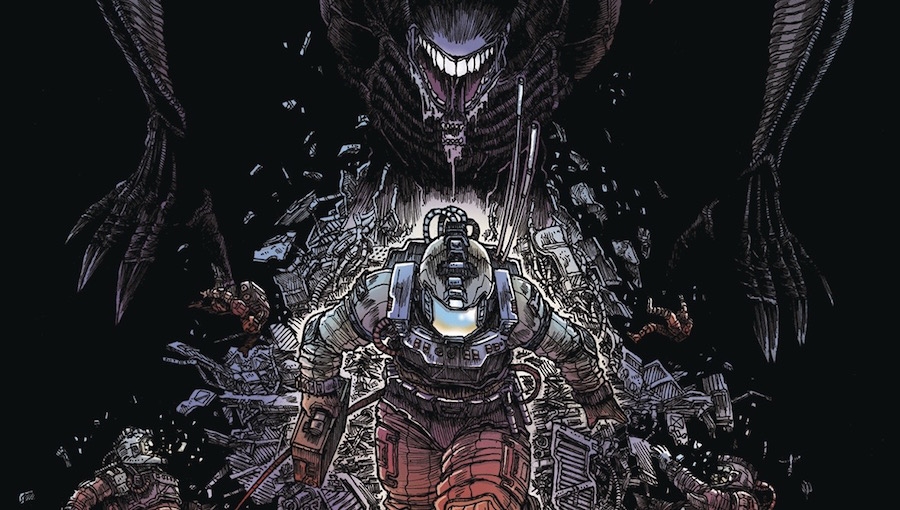Alien. Is there a more perfect name for the juggernaut of science fiction horror? The name conveys exactly what you need to know while remaining about as simplistic as you can get. I love the original Alien film. The Xenomorph remains my personal favorite design for an alien entity, and Sigourney Weaver’s Ellen Ripley is one of the most iconic female leads ever put to screen. As far as Alien‘s extended lore is concerned, it can be quite a mixed bag. A colleague of mine has been raving to me about the quality of William Gibson’s Alien 3, but it seems for every victory there’s an Aliens: Colonial Marines. With a bit of eager trepidation, I decided to pick up Aliens: Dead Orbit by James Stokoe and try my luck.
For everyone 40 years late to the party, the Alien franchise is about a very simple concept: In the distant future, humanity has become a space-faring race, and, during a routine mission, a small team discovers an incredibly hostile alien that is unlike anything we’ve ever faced before. Each movie follows a pretty standard format from there. An increasingly large number of these aliens, called Xenomorphs, do their damnedest to wipe out humanity while a ragtag ensemble of humans puts a stop to them using the tools they have on hand.
Aliens: Dead Orbit carries out this same general story with a few alterations. A pair of aliens makes up the primary threat, and wrinkles like survivors from another crew add some fresh spins on old ideas. What really sets Dead Orbit apart from its predecessors is how it chooses to tell its story. Half of the narrative features the main character, Wascylewski, entirely on his own in an abandoned space station. A weaker artist would have Wascylewski narrating to himself or leaving diary entries, but, instead, the writer lets the visuals tell the story, as nearly all of these segments are left devoid of dialogue. The effect is a deep sense of isolated hopelessness as Wascylewski’s growing fear and paranoia are entirely portrayed in silence. The fact that James Stokoe provided both the story and the artwork means that the two serve each other extremely well, and you don’t get the dissonance you sometimes see in stories where the writing relies heavily on the visuals.
Speaking of that artwork: It’s not what I expected. At first, I honestly didn’t like it. The proportions are strange, and everything has a nasty, unclean look to it. The more I sat with the comic, the more it grew on me, though. I realized that the harsh, unforgiving colors and faces were unsettling me which is exactly what good horror is supposed to do. The artist creates these incredibly detailed designs for the corridors and hulls of the various ships and stations in the story that gives everything a disorienting, maze-like feeling. It took me until the very end of the story, while looking at some of the variant covers, to realize that the ships and their designs were created in such a way to mimic the texture and skin of the Xenomorphs, and I can’t express how much I love that idea.
Aliens: Dead Orbit managed to surprise me by doing exactly what it set out to do. It created a dark, dismal story about being trapped in space with an unforgivable monster that feels more like the original Alien film then any of its sequels. The story is upsetting, the visuals disorienting, and it all leaves you with a pit in your stomach. It’s everything Alien is supposed to be. It’s rare for me to start a book and dislike certain elements, only to end up loving it. That’s exactly where I find myself with this one. I recommend people give it a look.
Creative Team: James Stokoe
Publisher: Dark Horse Comics
Click here to purchase.

